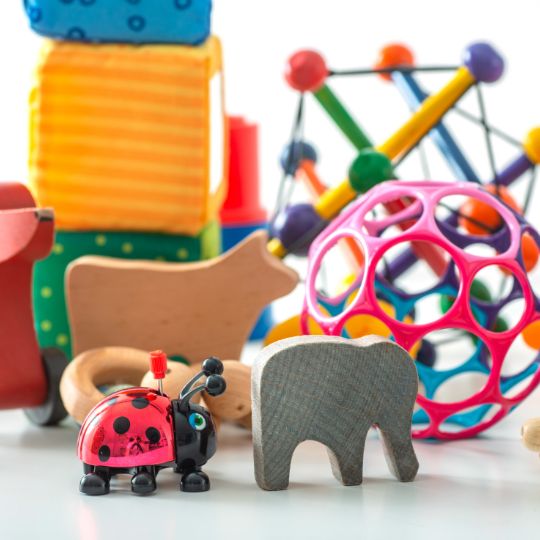Table of Contents
Overview
Separation anxiety in babies is a normal developmental phase that begins around six to eight months of age and peaks between ten and eighteen months. It is a natural reaction of babies when separated from their primary caregiver and can cause stress for both the baby and the caregiver.
Separation anxiety can be challenging for parents, but it is a normal part of a baby’s development and is not a cause for concern. Understanding the signs of separation anxiety and helping your baby to cope with it can make the experience less stressful for everyone involved.
Sign of separation anxiety in babies
The signs of separation anxiety in babies can vary, but some common signs of it includes:
1. Crying and fussiness
Crying and fussiness are common signs of separation anxiety in babies. When a baby is experiencing separation anxiety, they may cry or become upset in the absence of their caregiver.
This is because babies at this age have a strong bond with their primary caregivers and they rely on them for security and comfort. When their caregiver is absent, they may feel insecure and upset.
2. Clinginess
When a baby is experiencing separation anxiety, they may want to be held or carried by their caregiver at all times and may resist being put down. Being close to their caregiver gives them a sense of security and comfort.
If your baby is showing signs of clinginess, providing them comforting item, such as a blanket or stuffed animal, can help. This can help them feel more secure when their caregiver is not present.
Additionally, practicing short periods of separation can help your baby gradually become more comfortable with being away from their caregiver.
What should a 12 month old baby do? (Milestone for 12 month baby)
3. Fearfulness
Babies may show signs of fear or anxiety when they are away from their primary caregiver or when anticipating separation. This fear can be expressed through crying, fussiness, or clinging to their
4. Changes in sleep patterns
Separation anxiety in babies can sometimes cause changes in their sleep patterns. They may wake up more frequently during the night or have difficulty falling asleep. This is because their sense of security and comfort is often tied to their caregiver, and when their caregiver is not present, they may feel anxious or insecure.
Suppose your baby is experiencing changes in their sleep patterns. In that case, it can be helpful to establish a consistent bedtime routine. Try to includes comforting activities such as reading a book or singing a lullaby. you can also provide them comforting item, such as a favorite toy or blanket, can help them feel more secure during the night.
5. Changes in appetite
Some babies can become less interested in feeding or experience a decrease in appetite. This can be due to the stress and anxiety caused by separation from their primary caregiver.
If your baby is experiencing changes in appetite, it is important to ensure they are still getting enough nutrition.
Offer your baby frequent small meals or snacks throughout the day. Try to make feeding time a comforting and relaxing experience.
It may also be helpful to offer your baby a favorite food or drink to encourage them to eat.
Causes of separation anxiety in babies and toddlers
The causes of separation anxiety in toddlers and children are not specific, but several developmental factors may contribute to this. These include:
1. Cognitive Development
Toddlers and young children are still developing their understanding of object permanence. They may not yet understand that their caregiver still exists even when they can’t see them. As a result, they may become anxious or upset when their caregiver is not present.
Cognitive development is how a child learns to reason, think, and understand the world around them. It involves the development of skills such as memory, attention, language, perception, and problem-solving.
Cognitive development is a continuous process that begins at birth and continues throughout childhood and adolescence. During this time, children’s brains are constantly growing and developing, constantly learning new skills and abilities.
What is sand play? 12 benefits of sand play for kids of all ages.
2. Attachment
This is the emotional bond between a child and their primary caregiver. It is an important aspect of a child’s social and emotional development and can significantly impact their later relationships and overall well-being.
Attachment typically begins in infancy, as the child learns to rely on their caregiver for comfort, safety, and security.
The quality of the attachment bond depends on various factors, including the caregiver’s responsiveness to the child’s needs, their sensitivity to the child’s cues, and their ability to provide a secure and stable environment.
Attachment is a critical factor in a child’s development. It provides a sense of safety and security, allowing the child to explore their environment and develop important social and emotional skills.
Kids with secure attachments tend to be more confident, resilient, and able to regulate their emotions better. In contrast, children with insecure attachments may struggle with anxiety, depression, and other emotional difficulties.
3. Life Changes
Life changes can also be a contributing factor in separation anxiety in toddlers and children. These changes may include a moving to a new home, the birth of a sibling, the beginning of daycare or preschool, or a change in caregivers.
For young children, these changes can be confusing and upsetting, and they may not have the words to express their feelings. This can lead to anxiety and clinginess as they seek comfort and reassurance from their primary caregiver.
It is essential for parents and caregivers to be aware of these life changes and to provide support and reassurance to the child during these transitions.
This can include preparing the child for the change, providing a consistent routine, and being available to listen to and validate the child’s feelings.
4. Parental Anxiety
Parental anxiety can also affect separation anxiety in toddlers and children. Parents anxious or worried about leaving their child may inadvertently communicate their anxiety to the child, making them feel more anxious and insecure.
Additionally, parents who are overprotective or excessively involved in their child’s life may inadvertently reinforce the child’s dependence on them, making it harder for the child to feel comfortable with other caregivers or to navigate new experiences without them.
Best Oil for baby massage and benefits of each oil
5. Environmental Factors
Environmental factors can also contribute to separation anxiety in toddlers and children. For example, a child who experiences a traumatic event such as a natural disaster or a serious illness may become more anxious and clingy as they seek safety and security from their primary caregiver.
Other environmental factors that can contribute to separation anxiety may include high levels of stress or conflict in the family, a lack of social support or community resources, or exposure to violence or other forms of trauma.
Why do babies experience separation anxiety?
Babies experience separation anxiety as a natural part of their emotional and cognitive development. During the first year of life, babies develop a sense of attachment and trust in their caregivers, essential for their emotional and social development.
When a baby is separated from their caregiver, they may experience anxiety and distress, as they rely on their caregiver for comfort and security. This is because the presence of their caregiver provides them with a sense of familiarity and safety.
As babies develop and grow, they become more aware of their surroundings and understand that they are separate from their caregivers. This awareness can sometimes lead to anxiety and fear when their caregiver is absent.

When does separation anxiety peak for toddlers?
Separation anxiety peaks for toddlers around 18 months to 2 years of age. At this age, toddlers are becoming more aware of their surroundings and are developing a stronger sense of attachment to their primary caregivers.
They may also have a greater understanding of object permanence, which means they understand that objects (including people) still exist even when they are out of sight.
As a result, when toddlers are separated from their primary caregiver, they may experience intense anxiety, fear, and distress. This can manifest as clinginess, crying, and tantrums.
Caregivers need to be patient and understanding during this stage of development, as separation anxiety is a normal part of a child’s emotional and cognitive development.
How do I help with separation anxiety around sleep?
If your child is experiencing separation anxiety around sleep, there are several strategies that you can try to help them feel more comfortable and secure:
1. Establish a consistent bedtime routine
A regular bedtime ritual might help your youngster feel calm and at ease. This pattern should include relaxing activities like reading a book or having a bath, and it should be followed in the same sequence every night.
2. Provide comfort objects
A comfort object is an item that provides comfort and security to a child, often used to help them cope with separation anxiety or other stressful situations. Common comfort objects include stuffed animals, blankets, or other soft items a child can hold or snuggle with.
If your child is experiencing separation anxiety around sleep, providing them with a comfort object can be a helpful way to provide them with a sense of security and familiarity. The object can be a tangible reminder of their connection to you and provide comfort when you are not physically present.
Once your child has a comfortable object, encourage them to use it as needed. They might snuggle with it at bedtime, bring it along on outings, or keep it nearby when anxious or upset.
3. Use positive reinforcement
Encourage your child with positive reinforcement, such as praise and rewards, when they can fall asleep independently or stay in bed throughout the night.
4. Gradual separation
Try to Gradually lower the amount of time you spend with your child at bedtime. This can be done by sitting with your child for shorter periods each night until they are comfortable falling asleep independently.
5. Reassurance and empathy
Provide reassurance and empathy for your child’s anxiety and fear around sleep. Understand their feelings and provide comfort and support.
6. Seek professional help
Suppose your child’s separation anxiety interferes with their daily life or causes significant distress. In that instance, seeking advice from a healthcare physician or mental health expert may be beneficial.
Conclusion
Separation anxiety is a common and normal experience for babies and young children. While it can be distressing for both the child and their caregiver, it is important to remember that it is a natural part of a child’s emotional and cognitive development.
Recognizing the signs of separation anxiety, such as clinginess, crying, fearfulness, changes in sleep patterns, and changes in appetite, can help caregivers respond in a supportive and compassionate way.
Strategies such as providing comfort objects, establishing a consistent bedtime routine, using positive reinforcement, and seeking professional help can help manage separation anxiety.
By providing a secure and loving environment, caregivers can help their child develop the skills to cope with separation anxiety and eventually become more comfortable with independence.





